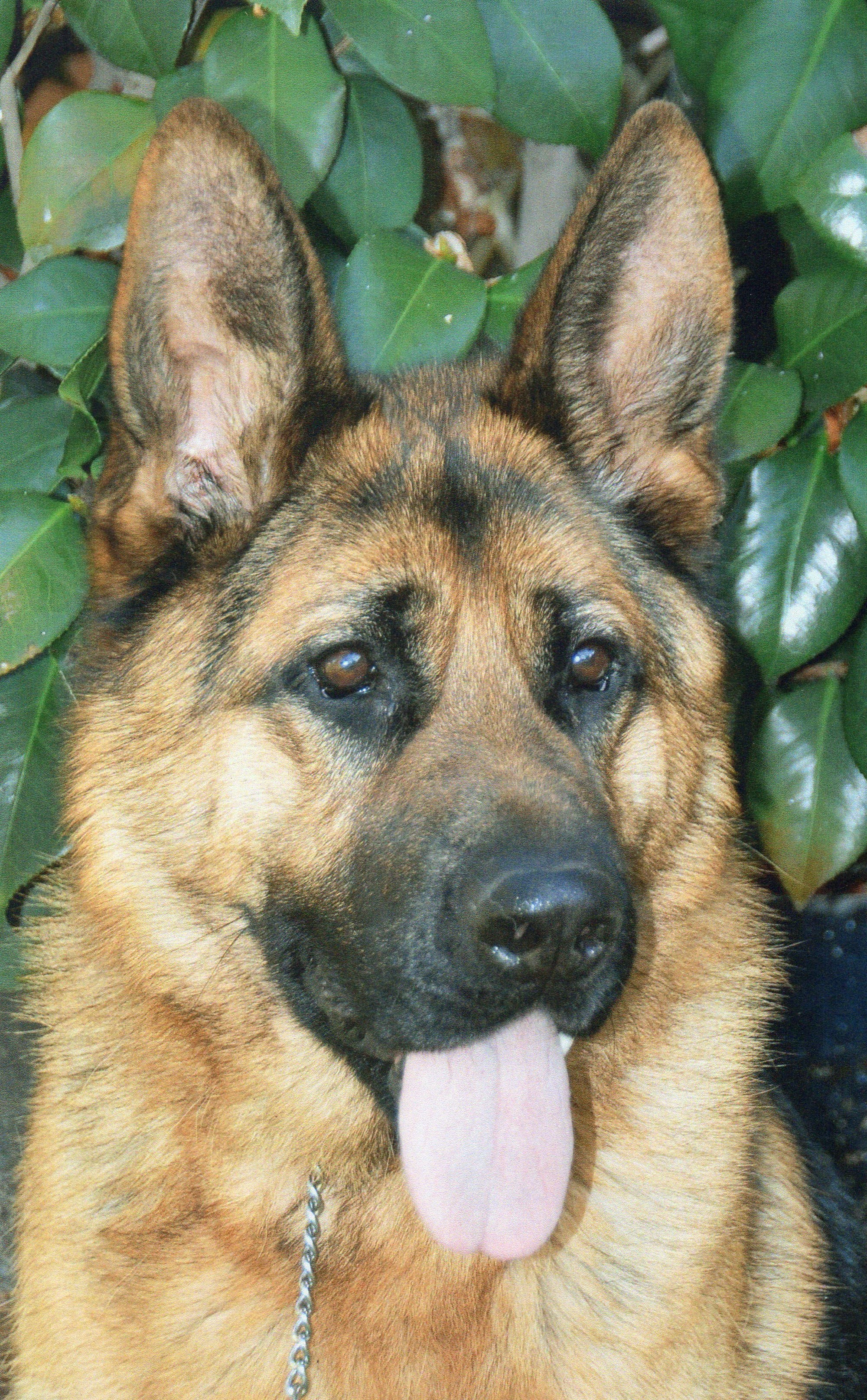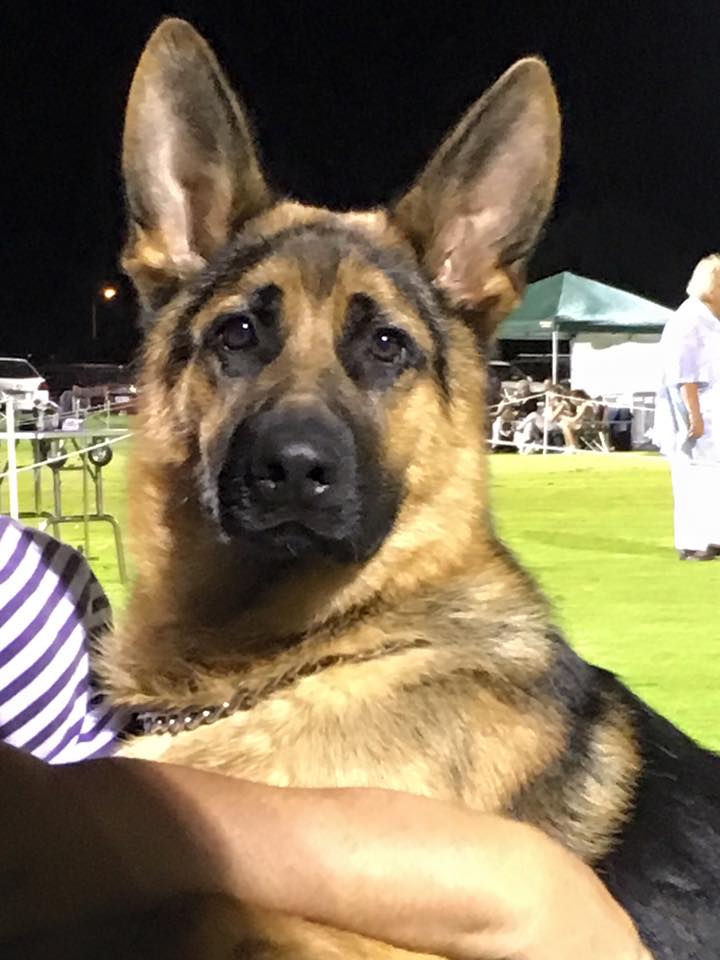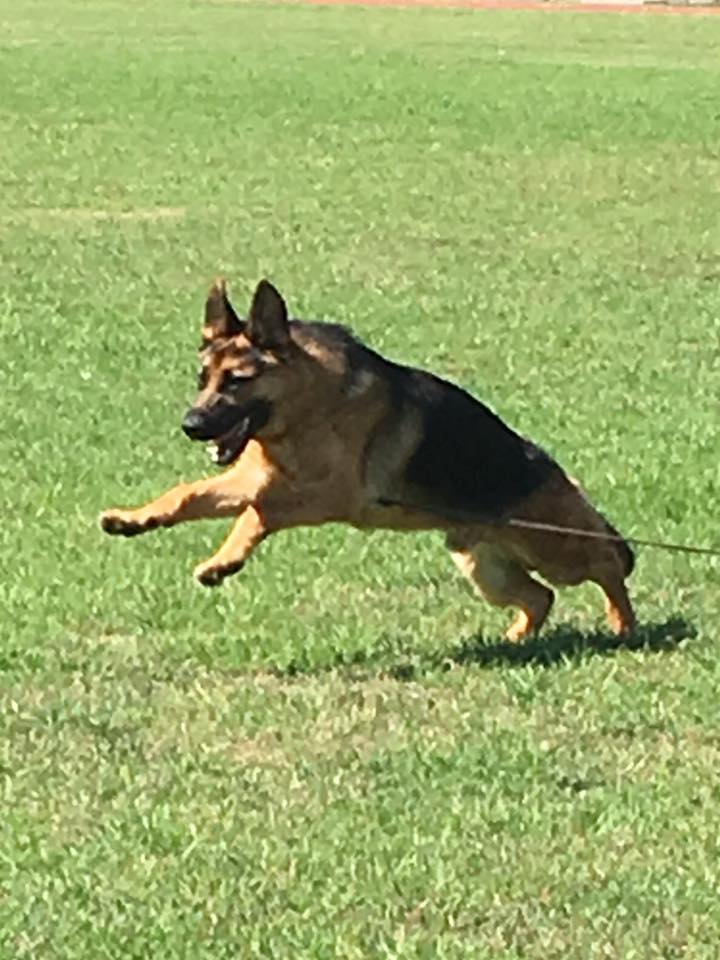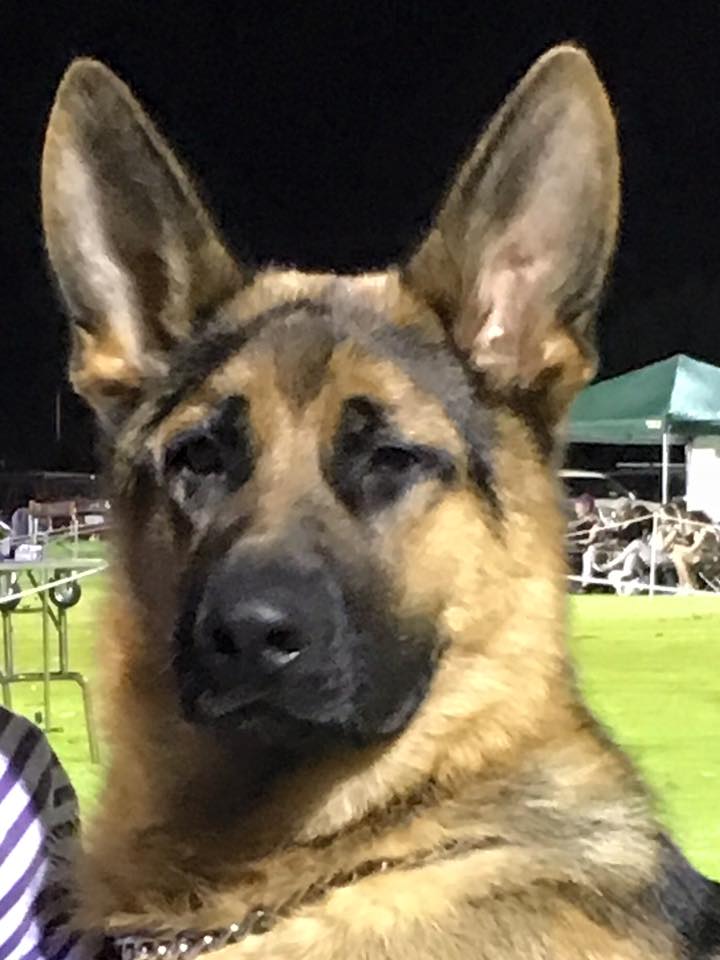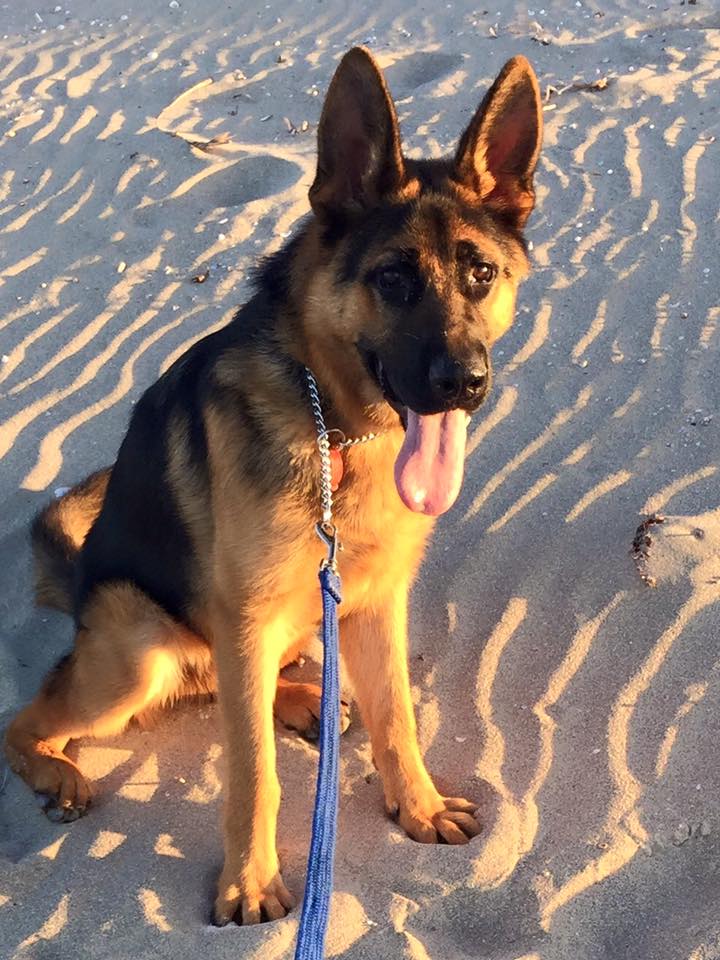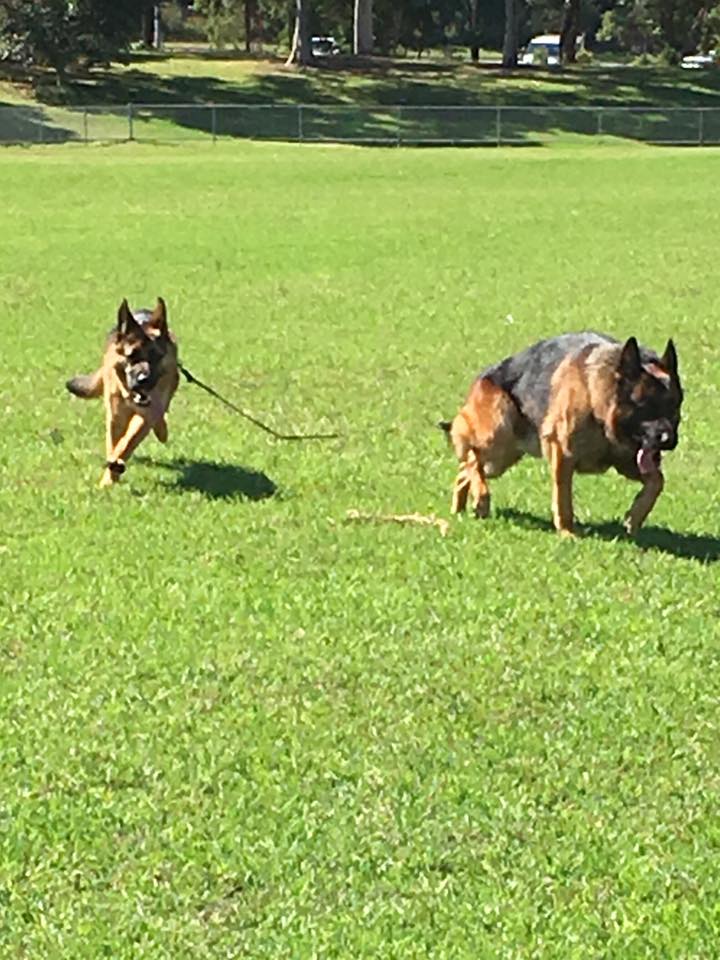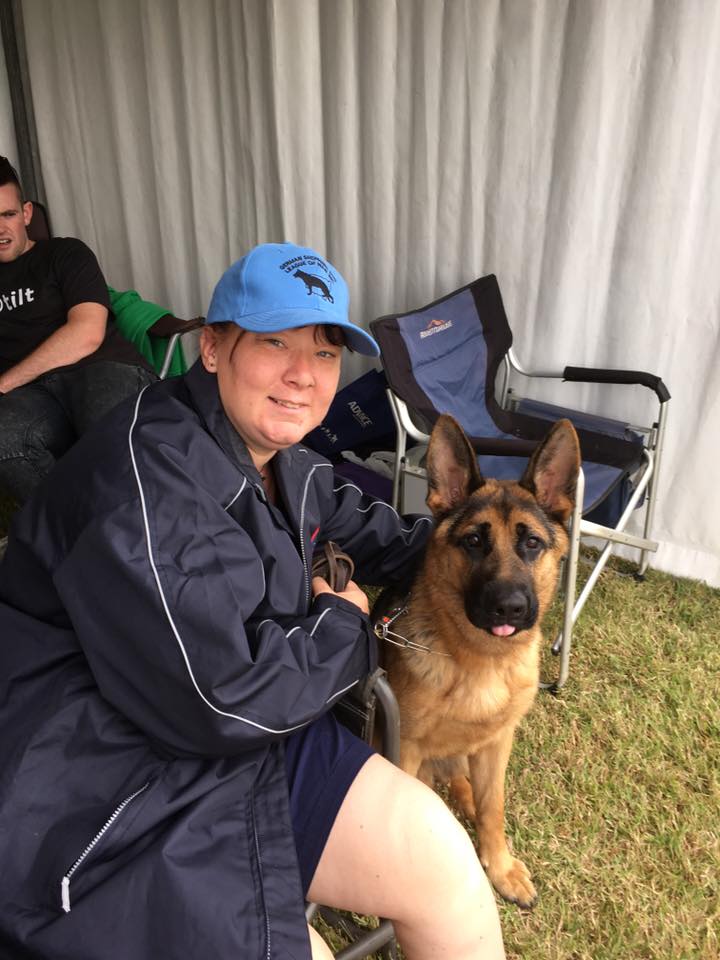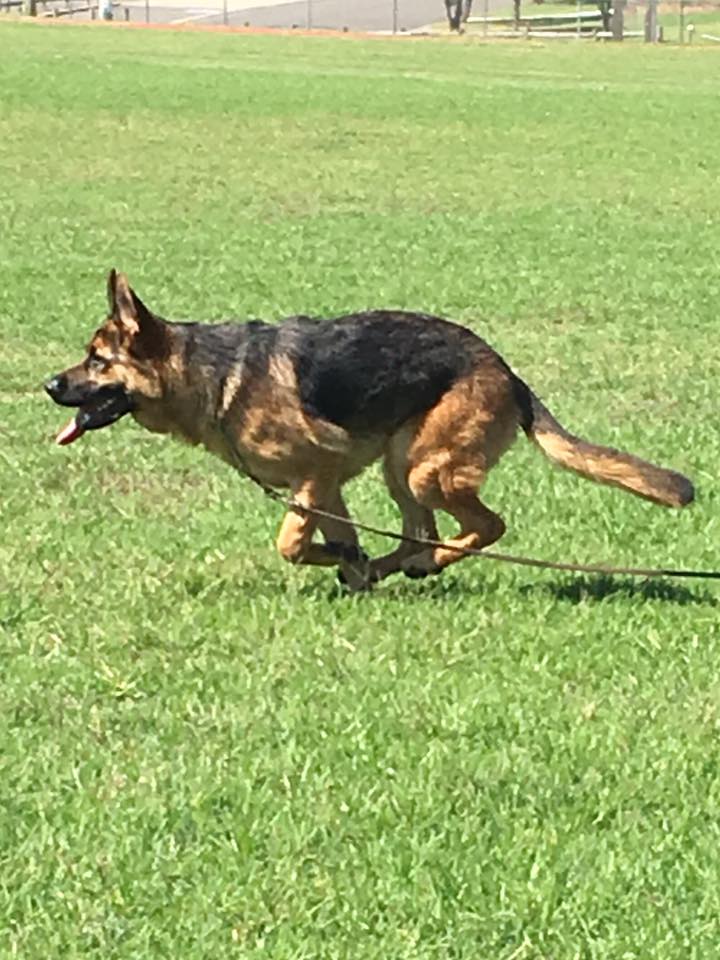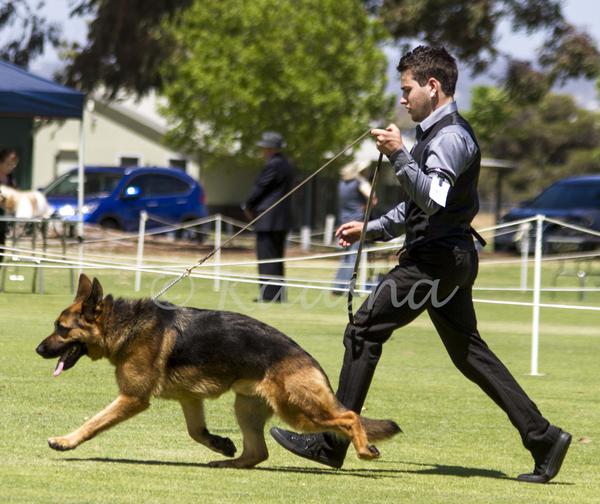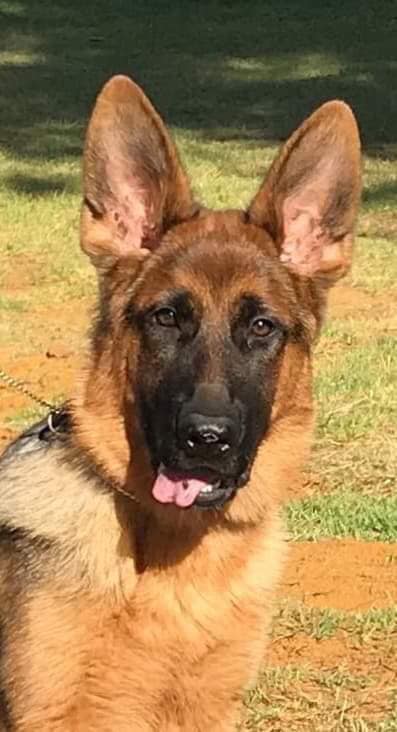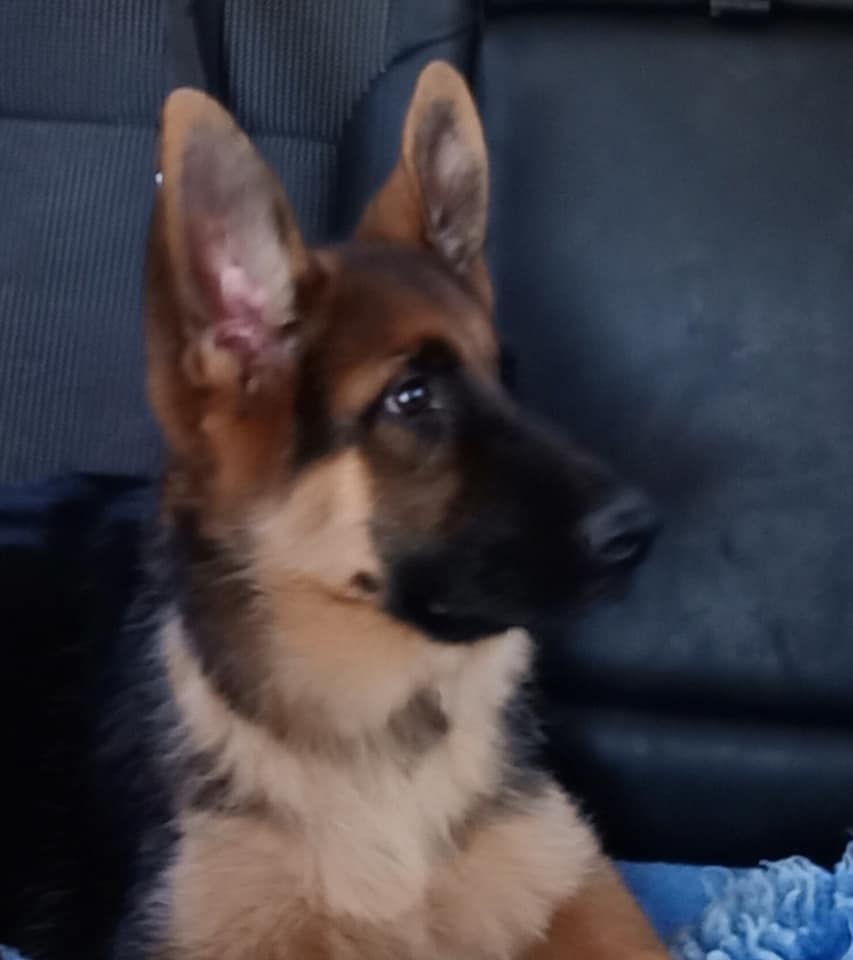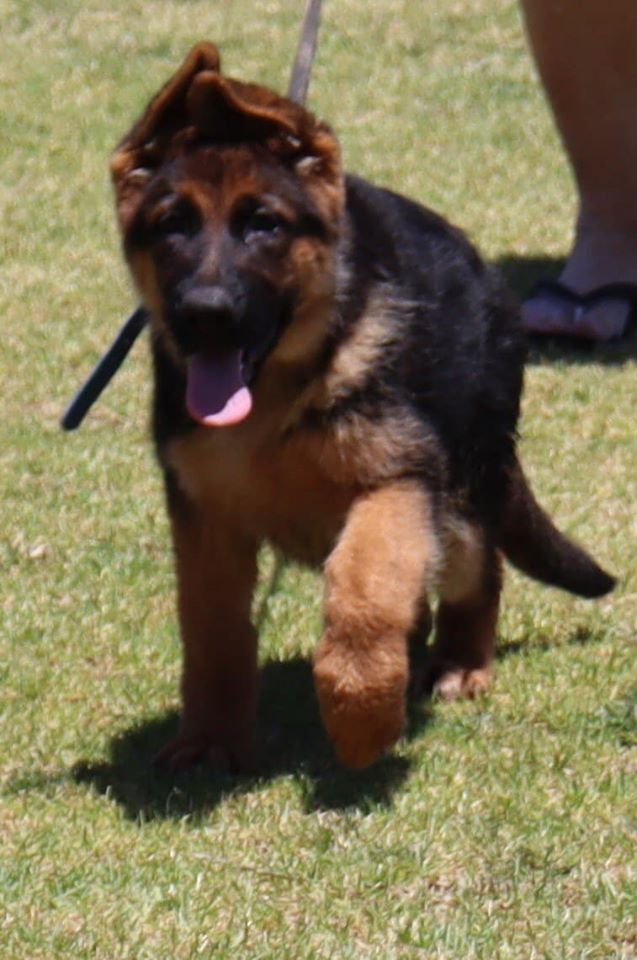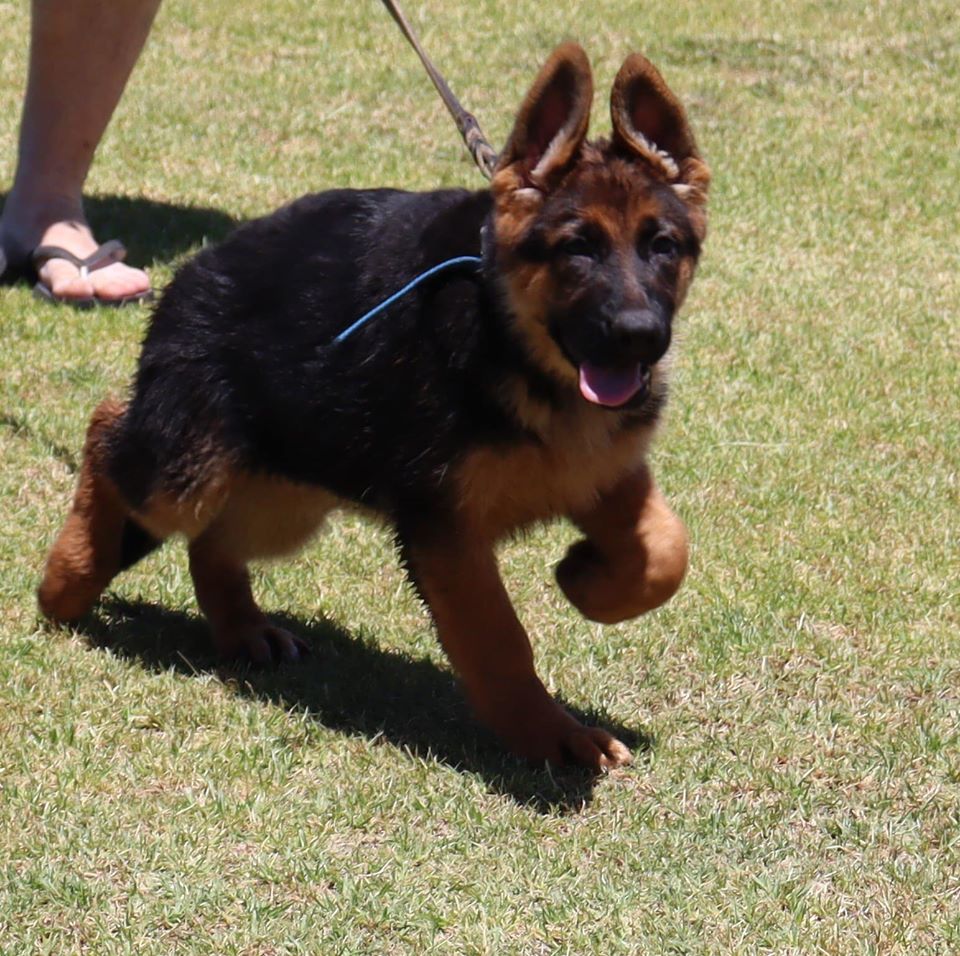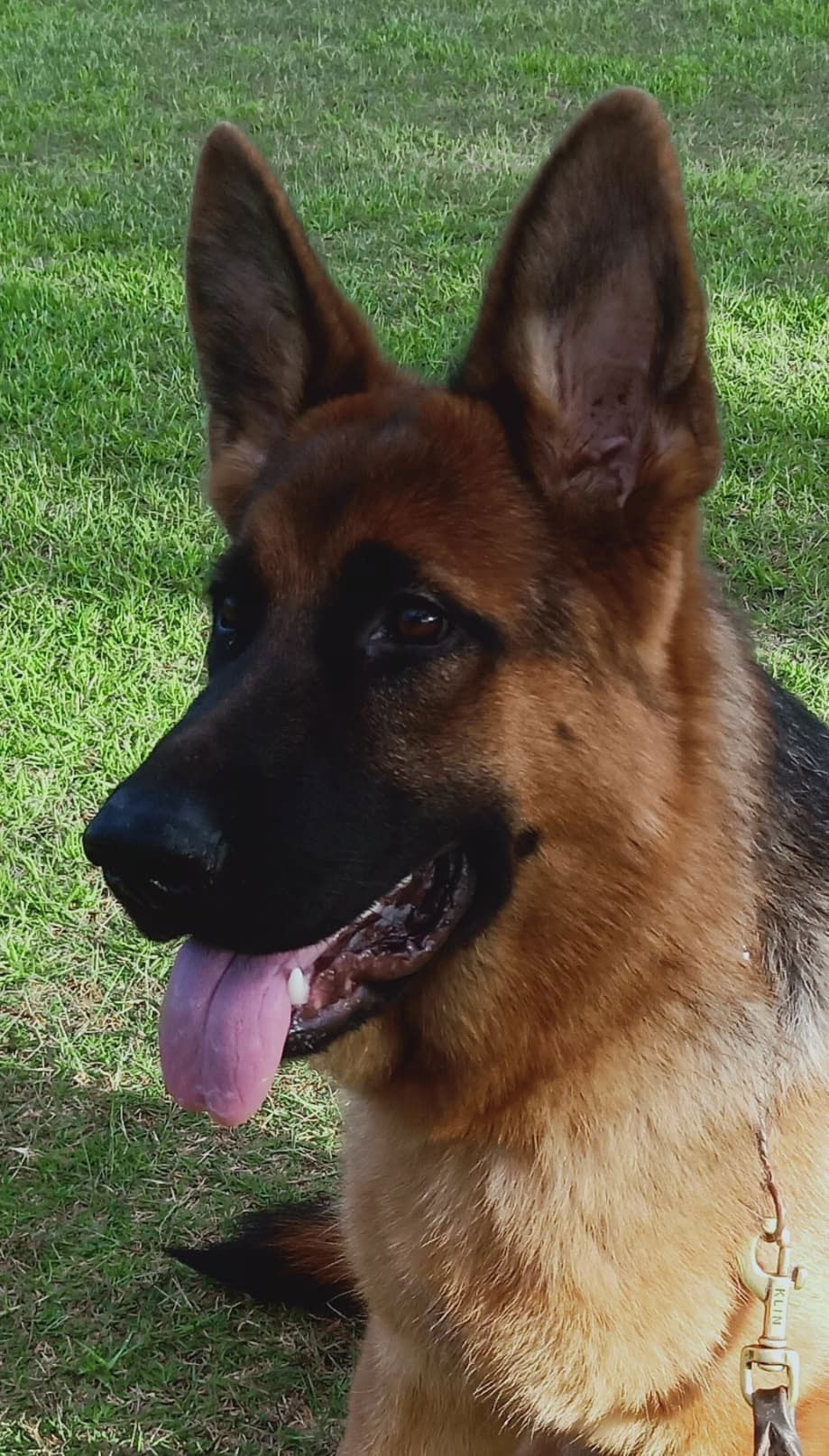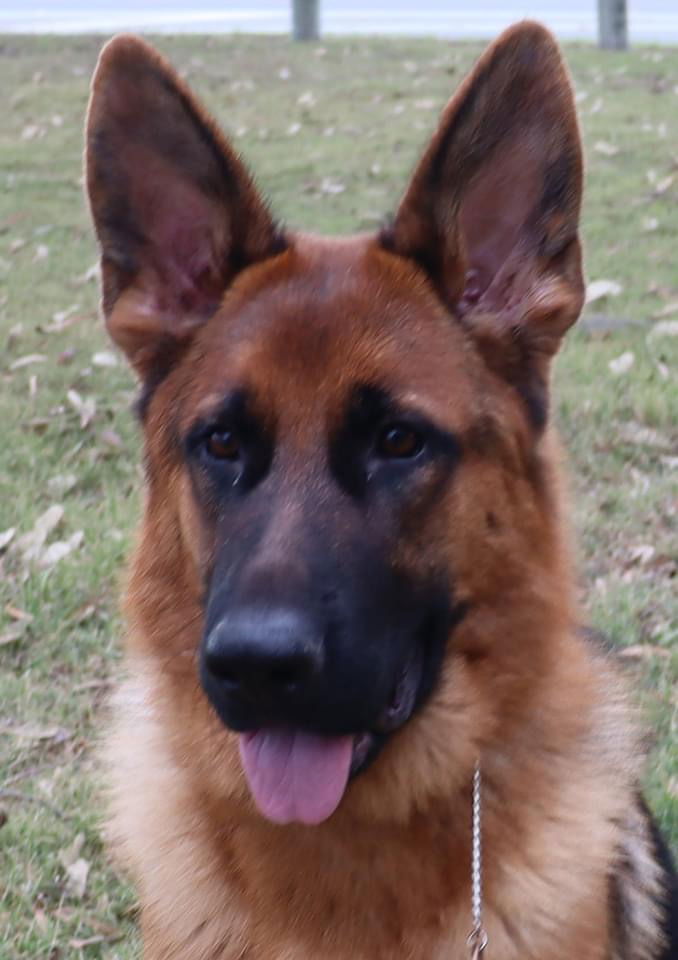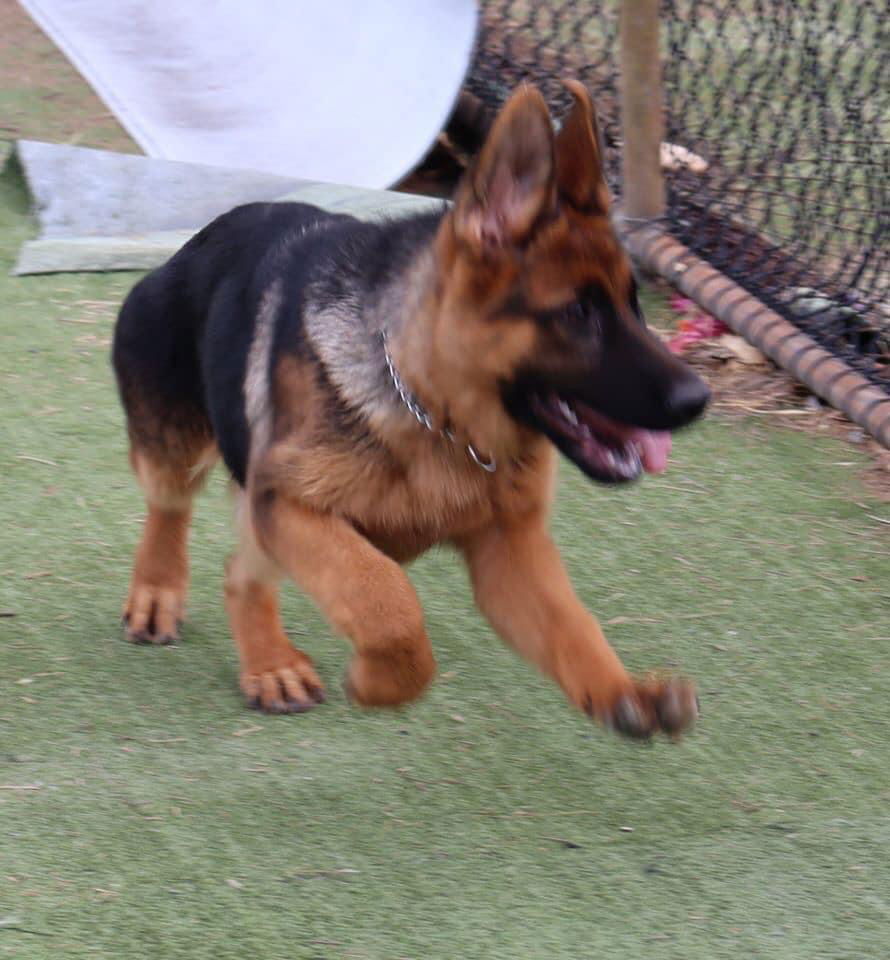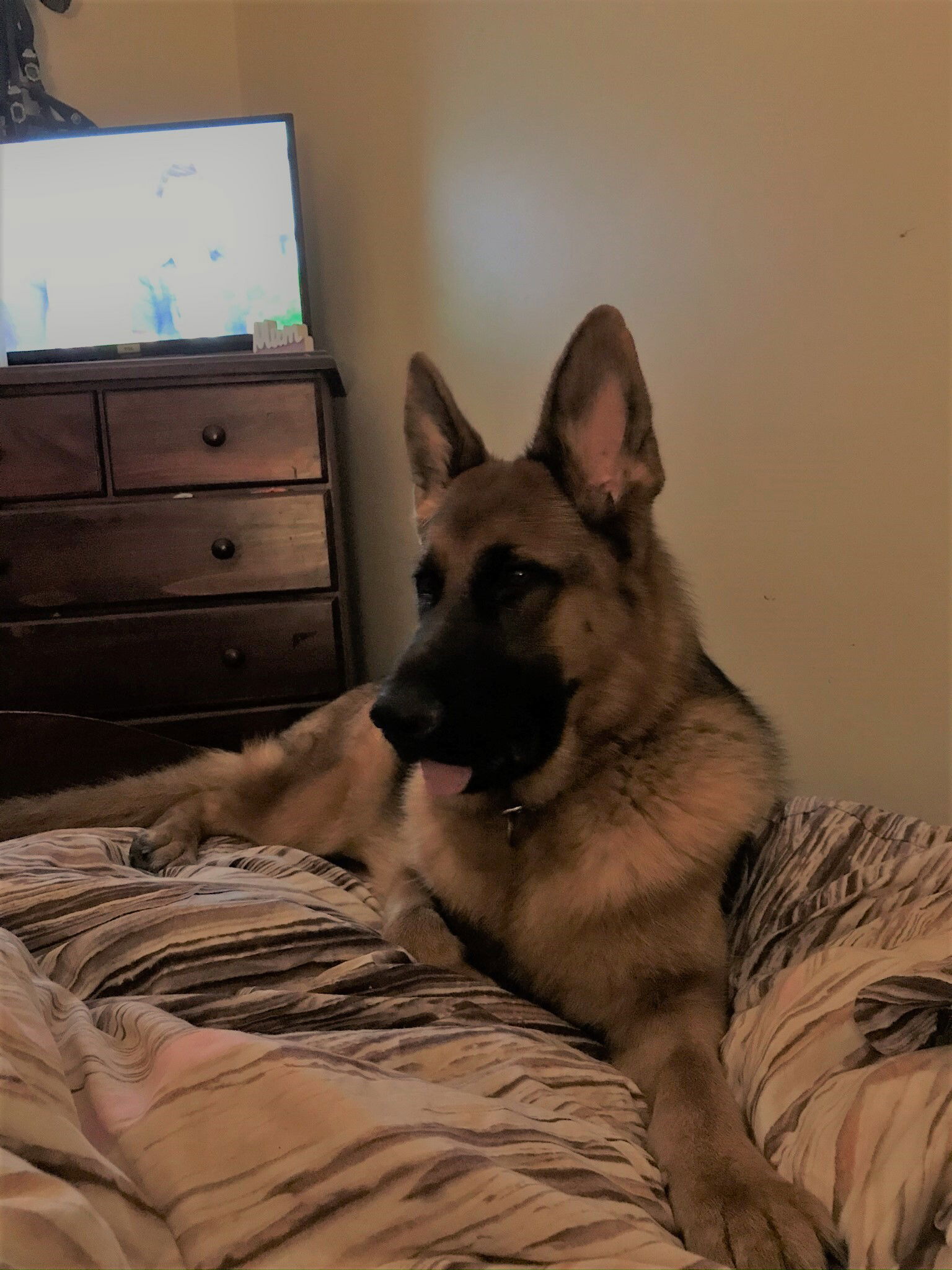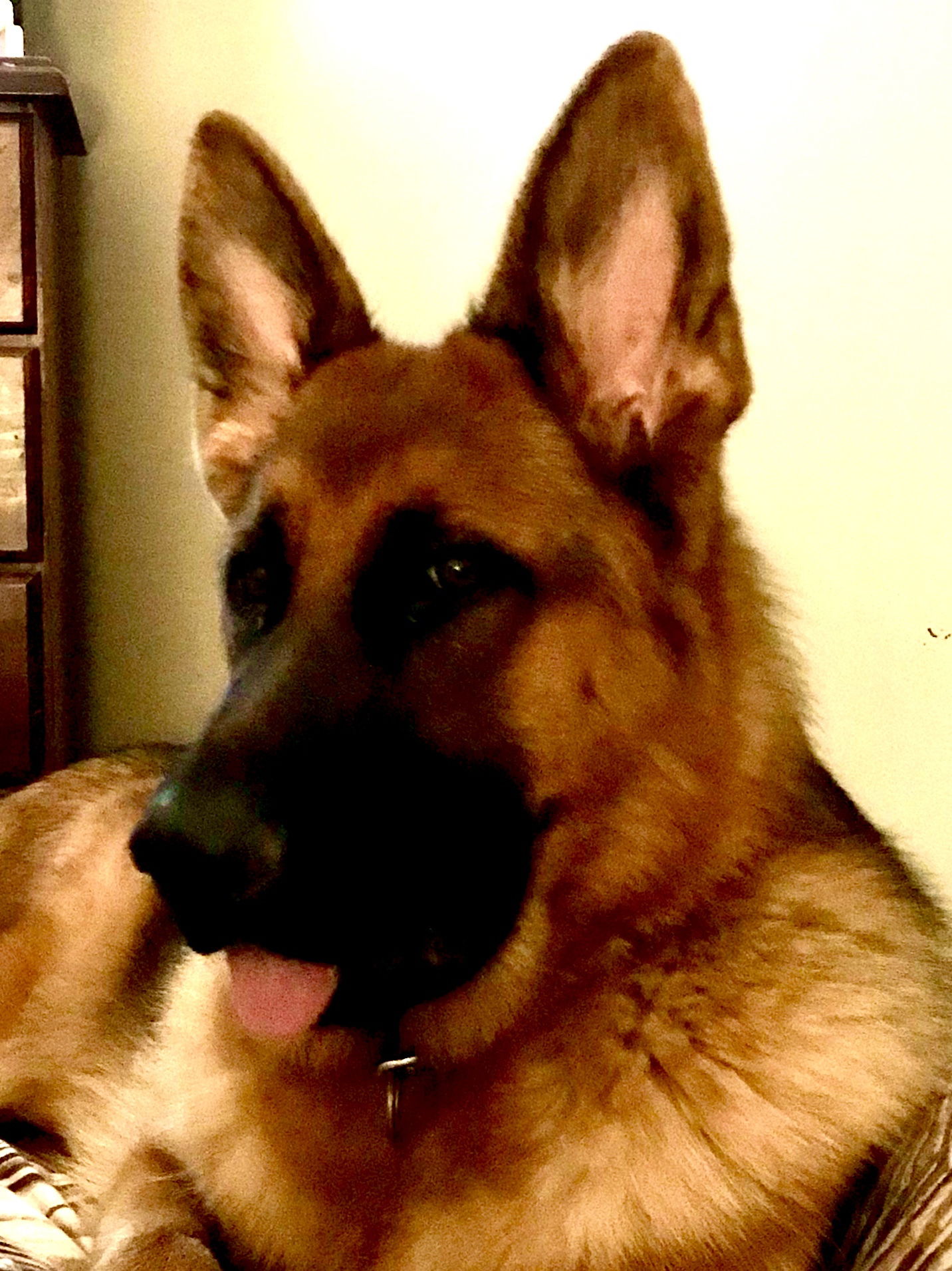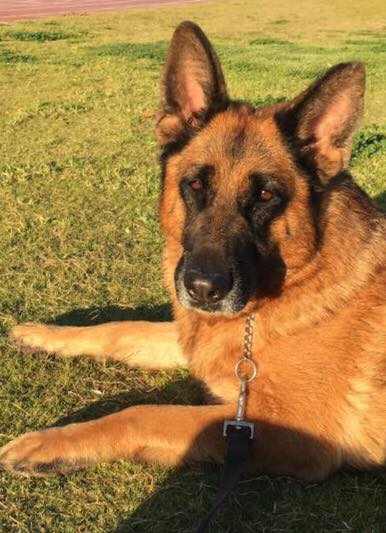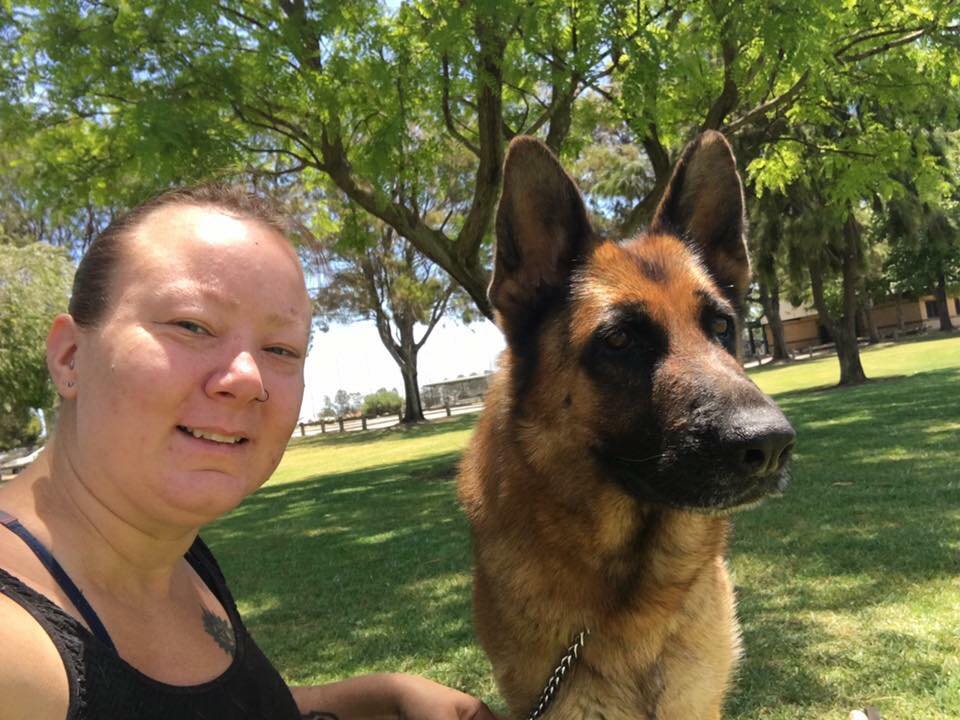Wohlstand German Shepherds
Next planned litter is early 2026
THE GSD
This article should be read by all puppy buyers, it will help to understand the different types of Shepherds and it will help you choose a puppy that suits your family.
The German Shepherd Dog (GSD) is one of the most popular breeds in the world, but ironically it's also misunderstood by many of its biggest fans. Many aren’t aware that the GSDs trotting in the show ring are drastically different from actively working GSDs, as they were bred for so much more than looks. If you're thinking about bringing one of these magnificent dogs into your life, it's critical to understand the important differences between show line and working line German Shepherds.
Working Line German Shepherds: the Breed Standard
German Shepherd Dogs were originally bred to work. The breed's creator, a German army captain named Max von Stephanitz, sought to create a hearty dog that could enthusiastically perform rigorous jobs, repeatedly and flawlessly every time – while still returning home to serve as a loyal protector and companion for its family. Breeding for looks was a secondary goal.
Since the first GSDs were bred in 1899, rigorous rules set by the German Shepherd Club of Germany (SV) have served to protect the breed standard. These standards ensure that all European-bred GSDs can only be certified by the SV if they:
- meet certain physical and mental characteristics
- are medically certified to have non-displaysic hips
- have earned a “working title” in Schutzhund, Herding or Police Service activities.
- High “drive,” especially prey drive. The dog must show the enthusiasm and capability to repeatedly work and perform a task in return for some kind of reward.
- Exceptional temperament. The dog must have high energy, a love of work, loyalty to their owners and confidence around children and strangers. Exceptional intelligence is a must.
- Bullet-proof nerves. A GSD must have an intelligent, confident and appropriate reaction to any situation. They cannot be bothered by environmental conditions like traffic, sirens or gunshots. Rather than avoiding it, the dog must show a desire to confront a threat.
- Physical Soundness. They have agile, smaller and more compact bodies that can put in a hard day's work and be easily hoisted during duty. They also have shorter, coarse coats of varying colors. Most significantly, their silhouette is more squared and they lack the “flying trot” gait caused by the steeply angled hindquarters favored by show line breeders.
Show Line German Shepherds Reign in the Ring
The average GSD fan wants the look of the popular breed, yet few pet owners have the time, patience or knowledge to raise a true, authentic working line GSD. To accommodate pet consumer demand, European dog breeders began creating the “Show Line German Shepherd,” also referred to as “High Lines” and “Sieger Lines.” These dogs must pass the basic certifications required by the SV, but they are primarily bred for winning appearances at dog shows and as family pets.
In general, both European and American show line German Shepherds (and even those from backyard breeders) have the following characteristics:
- A lower energy drive than working line Shepherds
- Larger and bulkier bodies, broader heads and the extremely angled hindquarters
- More uniformity in coat color, typically red and black or black and tan with the classic black saddle. Sables, black and blanket coat patterns are rare (but common in working lines GSDs).
- Thicker, longer coats
- The personality and temperament to become a good family pet – but only when raised in capable hands
Before bringing a German Shepherd Dog into your life, learn as much about the dog's ancestry as possible. This is easy when you buy from a reputable German Shepherd breeder, but futile if you want to adopt one of the thousands in rescue. But please don't let that deter you from considering a German Shepherd rescue. If you think you have the lifestyle, patience and willingness to commit to lifelong learning with a GSD, first get to know other German Shepherd owners, find out who the excellent breeders and trainers are in your area, and learn as much as you can about the joys and pitfalls of loving a German Shepherd from any bloodline
ABOUT US
Wohlstand German Shepherd Dogs is located in Rockingham, Western Australia. We are actively involved in exhibiting German Shepherd Dogs in speciality dog shows, All Breeds Shows and training our dogs in Obedience
Our dogs are part of our family and live as such. We are a small scale kennel breeding the occasional litter in our home, while emphasising raising well socialised puppies by raising them in our family home with our Grand Children .
I grew up with German Shepherds as pets since 1989 . Got into Showing them in 1994 under the guidance of Fran McAdam (Durnstein Kennels) in Sydney
I then started breeding myself after moving to Qld in 1996, I got out of the dogs for awhile to work in the mines. in 2012 I had to get another GSD who is now known as Ch Jentol Gabbys Okito 'A''Z' BSCLII Exc (Keno), I showed him to get his Australian Champion title. then GSD fever hit me again thus getting back into the breeding side again!
I started Wohlstand in 2016, we don't breed a lot but feel free to enquire anytime about upcoming Litters or check out my "Litters" Page
Thank you for visiting
Cheers,
Sue
Our dogs are part of our family and live as such. We are a small scale kennel breeding the occasional litter in our home, while emphasising raising well socialised puppies by raising them in our family home with our Grand Children .
I grew up with German Shepherds as pets since 1989 . Got into Showing them in 1994 under the guidance of Fran McAdam (Durnstein Kennels) in Sydney
I then started breeding myself after moving to Qld in 1996, I got out of the dogs for awhile to work in the mines. in 2012 I had to get another GSD who is now known as Ch Jentol Gabbys Okito 'A''Z' BSCLII Exc (Keno), I showed him to get his Australian Champion title. then GSD fever hit me again thus getting back into the breeding side again!
I started Wohlstand in 2016, we don't breed a lot but feel free to enquire anytime about upcoming Litters or check out my "Litters" Page
Thank you for visiting
Cheers,
Sue

OUR GIRLS
OUR BOY KENO
Aust. Ch Jentol Gabbys Okito 'A''Z' BSC. Ex.
Died 30-6-2023 RIP Beautiful
State Bred in Show Working Dog Club of WA 2016
Runner up Best Exhibit in Show & Best in Group April 2016
Kenos First Excellent Medal
Some of Kenos Show Results
LITTERS
Next planned Litter Mid 2026
10th October 2025 from Ch Lawine Diamond Essence AZ BSC Multi Exc
Charlee had 2M, 2F
All Puppies are spoken for
Sire of litter is Ch Chevyvale Colt AZ BSC EX MERIT
Colt is first pic above
I am super excited about this Litter
Tehyas Babies arrived into this world on 27-9-25
4 Females & 2 Boys
Tehya is doing a great job as a first time Mum ♥️
All puppies are spoken for
Our puppies are treated as part of the Family & not raised in a kennel environment
German Shepherds are a very popular breed, with outstanding characteristics such as sound nerves, alertness, self-confidence, trainability, watchfulness, loyalty, incorruptibility as well as courage and hardness. They are an ideal and superior working dog in general, and in particular to be a guard, companion, protection or herding dog, but most of all an excellent addition to your family.
German Shepherds love to be with people, so if you make the decision to own one, make sure they are not just put in the backyard and forgotten.
We strongly believe in responsible breeding, only breeding from dogs that have passed a range of tests. While this doesn't guarantee a puppy will be free of genetic health issues, it does mean we do as much as we possibly can to reduce the likelihood of it occurring.
German Shepherd DNA testing is done to screen for the following diseases:
German Shepherd DNA testing is done to screen for the following diseases:
- Canine Leukocyte Adhesion Deficiency Type III (German Shepherd Type)
- Degenerative Myelopathy
- Haemophilia A / Factor VIII (German Shepherd Type)
- Hyperuricosuria
- Ivermectin Sensitivity MDR1 (Multi Drug Resistance)
- Malignant Hyperthermia
- Mucopolysaccharidosis VII - Type II (German Shepherd/Belgian Shepherd Type)
- Pituitary Dwarfism
- Renal Cystadenocarcinoma and Nodular Dermato fibrosis (German Shepherd Type)
- Scott Syndrome (German Shepherd Type)
- Hip and elbow dysplaysia
Our litter from Tehya & will be $3500
$500 non refundable deposit at 2wks of age required to secure a puppy
Balance payable when Puppy leaves at 8wks
Please contact Dogs West if you wish to verify I'm a Registered Breeder 08 9455 1188
More photos can be viewed on my Gallery & puppy pages
Or
Visit my page on Facebook
Wohlstand German Shepherds
For further information
0428 367 394 or wohlstandgsd@gmail.com
CONTACT
- Rockingham Western Australia, Australia
- +61428367394 - Sue Smith
- wohlstandgsd@gmail.com
- 8.AM- 8PM- 7 Days a Week
We are also on Facebook & Instagram
